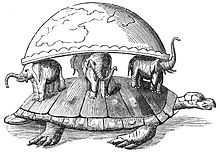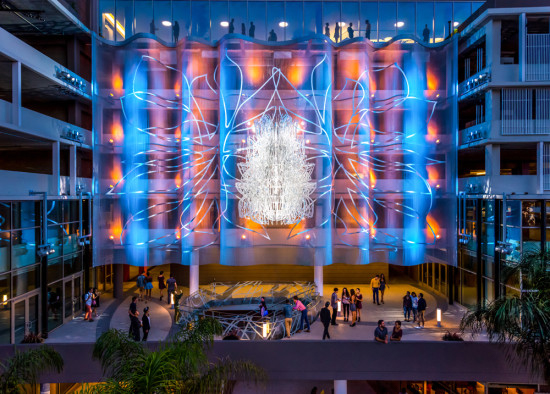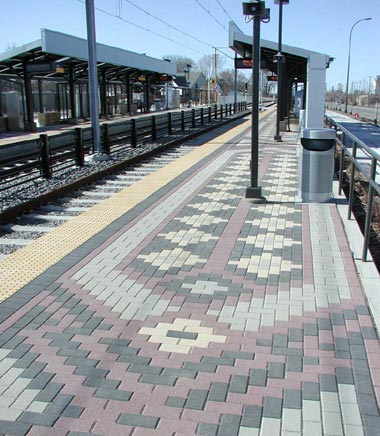The turtle is a symbol of Mother Earth. The water is an allusion to the nearby Minnehaha Creek and the history of travels in this corridor. Both turtles travel the direction of the train on the track in front of their platform and toward each other to complete a circle of unity. Each turtle has a pine tree and its roots etched on their backs, representing the Confederacy of Iroquois Nations which Hiawatha worked to form. Hiawatha was the original name of this light-rail line and the name of the road that the line parallels. Although, it should be noted that Hiawatha Avenue and the nearby Minnehaha Creek are named after fictional characters from Longfellow's epic poem The Song of Hiawatha, while the Hiawatha that helped form the Confederacy of Iroquois Nations is not the Hiawatha of the poem.

Many cultures share a myth of turtles, or tortoises, carrying the world on their back. Sometimes the world is on the back of four elephants which are on the back of a turtle.
Cliff Garten is an internationally recognized sculptor and founder of Cliff Garten Studio in Venice, California.
By connecting people to places and infrastructure through sculptural material, social history and ecology, Garten's work locates the latent potential in every public place and situation to become more than the specific functions it appears to perform. Sculpture and landscape, function and form, like public and private experiences are never distinct, but exchange places throughout the day. Sculpture defines our interaction and movement by creating energy between things, generating interest in public activity, reframing our private lives and creating a sense of place within public and private realms.
Garten received a Master of Fine Arts in Sculpture from the Rhode Island School of Design and a Master of Landscape Architecture with Distinction from the Harvard Graduate School of Design.
Cliff Garten's website

Los Angeles Opens Its Heart of Compassion, Los Angeles, California
Cedar-Riverside Station, and five other stations, originally had paver designs on the platforms created by artist Richard Elliott. Each platform was inspired by artifacts or architectural details found in the Minneapolis/St. Paul communities and were developed by working with museums, community members and curators. The specific designs selected as inspirational starting points were picked for their cultural and historical importance and fall into three groups; native motif, immigrant fabrics, and the culture that has developed in Minneapolis as expressed through its architecture. Each platform design stands on its own, but together they make a unified statement about the cultural history of Minneapolis.
Collectively, the artwork is titled, Then Till Now: A History and Culture Based Portrait Of Minneapolis As Expressed Through Six Geometric Platform Designs and originally appeared at Cedar-Riverside, Franklin, 38th Street, 46th Street, VA Medical Center and American Boulevard stations.
Unfortunately, the paver bricks did not hold up well with the severe Minnesota winters and the heavy foot traffic of a transit system. The only remaining paver design exists at American Boulevard Station.
More art by Richard Elliott


This image on the northbound platform: To represent commerce, the artist used patterns from the 1901 Grain Exchange, designed by Minneapolis Architects Kees and Colburn at 46th Street Station. 200’ x 9’
 This image on the southbound platform: A northern European native costume brought over by a Scandinavian immigrant inspired 46th Street Station. 200’ x 9’
This image on the southbound platform: A northern European native costume brought over by a Scandinavian immigrant inspired 46th Street Station. 200’ x 9’